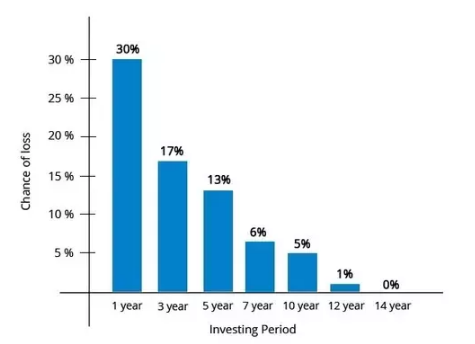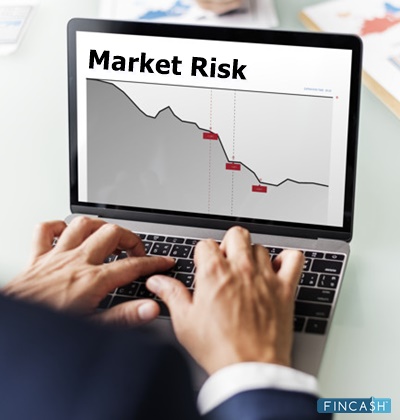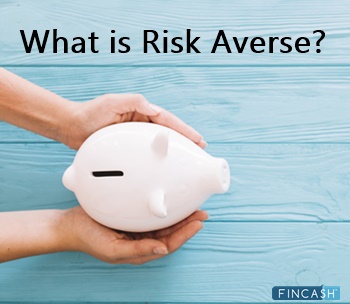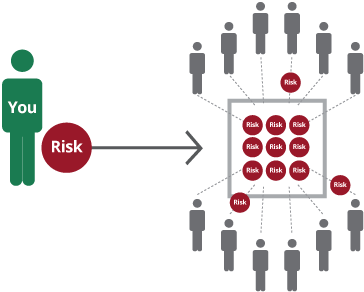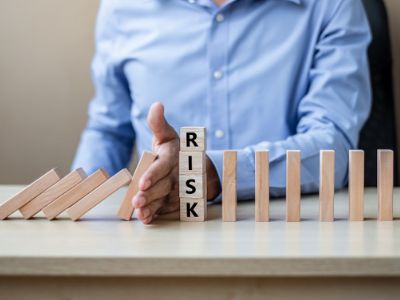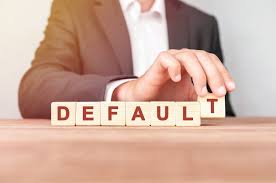What is Risk Profile?
A risk profile is one of the most important things to analyse before making an investment. Ideally, experienced investors would know their risk ability, but a newbie would have a very little idea about the risk involved with Mutual Funds or the right mutual fund as per their risk appetite.
In many certains, most of the investors were overconfident at the time of Investing and they turn extremely nervous as the Market becomes volatile. Hence, knowing your risk profile remains at the center stage of any investment.
Especially in the case of mutual fund investment, the suitability of a product largely depends upon the characteristics of the investor. Investors should know their investment objective, how long they wish to invest, ability to tolerate risk, minimum investment amount, etc.
Risk Profiling Procedure
Risk– with respect to investing– is the Volatility or the fluctuation of the prices and/or investment returns. So risk assessment or risk profiling is the systematic evaluation of all the potential risks involved in the investment activity. Risk profiling gives you a clear picture of your risk appetite, i.e. evaluating your risk capacity, your required risk, and your risk tolerance. We will elaborate each term separately.
When an investor conducts their risk profiling, they have to answer a set of questions designed specifically for the purpose. The set of questions differs for different Mutual Fund Houses or distributors. The score of investor after answering the questions determines their Range of taking a risk. An investor can be a high-risk taker, mid-risk taker or can be a low-risk taker.
Risk Identification and Risk Analysis
Once the risk is identified by the risk assessment procedure, that risk is then analysed. It is divided into three broad categories -

Risk Capacity
Risk capacity is the quantitative measure of taking a risk. It maps your current and future financial position which includes factors like Income, savings, expenses, and liabilities. With these factors evaluated, the rate of returns required to reach your Financial goals is determined. In simple words, it is the level of the Financial Risk you can think of affording.
Risk Required
Risk required is determined by your risk capacity. It is the risk associated with the returns needed to reach your financial targets with available resources. Risk required educates you about what you could potentially be taking on with a certain investment. It gives you an honest perception and a clear picture about the type of the risk you are about to take.
Risk Tolerance
Risk tolerance is the level of risk you are comfortable with. It is simply your willingness to accept the fluctuations in the market that may or may not occur in order to achieve your financial objectives. Risk tolerance can be broadly divided three types
- High-Risk Tolerance
- Mid-Risk Tolerance
- Low-Risk Tolerance
Talk to our investment specialist
Risk Assessment Methodology- Factors & Influence
To determine the category in which you fall there are certain parameters considered
| Factor | Influence on Risk Profile |
|---|---|
| Family Information | |
| Earning Members | Risk appetite increases as the number of earning members increases |
| Dependent Members | Risk appetite decreases as the number of dependent members increases |
| Life expectancy | Risk appetite is higher when life expectancy is longer |
| Personal Information | |
| Age | Lower the age, higher the risk that can be taken |
| Employability | Those with steady jobs are better positioned to take risk |
| Psyche | Daring and adventurous people are better positioned mentally, to accept the downsides that come with risk |
| Financial Information | |
| Capital base | Higher the capital base, better the ability to financially take the downsides that come with risk |
| Regularity of Income | People earning regular income can take more risk than those with unpredictable income streams |
Best Mutual Funds As Per Risk Appetite
Mutual Funds for Conservative Investors
Fund NAV Net Assets (Cr) 3 MO (%) 6 MO (%) 1 YR (%) 3 YR (%) 2024 (%) Debt Yield (YTM) Mod. Duration Eff. Maturity Sub Cat. Franklin India Ultra Short Bond Fund - Super Institutional Plan Growth ₹34.9131
↑ 0.04 ₹297 1.3 5.9 13.7 8.8 0% 1Y 15D Ultrashort Bond Aditya Birla Sun Life Savings Fund Growth ₹564.439
↑ 0.06 ₹22,389 1.6 3.1 7.5 7.5 7.9 6.81% 5M 19D 6M 22D Ultrashort Bond ICICI Prudential Ultra Short Term Fund Growth ₹28.483
↑ 0.00 ₹17,841 1.5 3 7.1 7.2 7.5 6.64% 4M 24D 6M 11D Ultrashort Bond SBI Magnum Ultra Short Duration Fund Growth ₹6,140.22
↑ 0.81 ₹14,505 1.5 3 7 7.1 7.4 6.39% 4M 20D 5M 26D Ultrashort Bond Invesco India Ultra Short Term Fund Growth ₹2,768.44
↑ 0.36 ₹1,259 1.4 2.8 6.9 7 7.5 6.37% 4M 23D 5M 2D Ultrashort Bond Kotak Savings Fund Growth ₹44.0241
↑ 0.01 ₹15,149 1.5 2.9 6.8 7 7.2 6.49% 5M 12D 6M 11D Ultrashort Bond Note: Returns up to 1 year are on absolute basis & more than 1 year are on CAGR basis. as on 7 Aug 22 Research Highlights & Commentary of 6 Funds showcased
Commentary Franklin India Ultra Short Bond Fund - Super Institutional Plan Aditya Birla Sun Life Savings Fund ICICI Prudential Ultra Short Term Fund SBI Magnum Ultra Short Duration Fund Invesco India Ultra Short Term Fund Kotak Savings Fund Point 1 Bottom quartile AUM (₹297 Cr). Highest AUM (₹22,389 Cr). Upper mid AUM (₹17,841 Cr). Lower mid AUM (₹14,505 Cr). Bottom quartile AUM (₹1,259 Cr). Upper mid AUM (₹15,149 Cr). Point 2 Established history (18+ yrs). Established history (22+ yrs). Established history (14+ yrs). Oldest track record among peers (26 yrs). Established history (14+ yrs). Established history (21+ yrs). Point 3 Rating: 1★ (bottom quartile). Top rated. Rating: 3★ (upper mid). Rating: 3★ (upper mid). Rating: 3★ (lower mid). Rating: 3★ (bottom quartile). Point 4 Risk profile: Moderate. Risk profile: Moderately Low. Risk profile: Moderate. Risk profile: Low. Risk profile: Moderate. Risk profile: Moderately Low. Point 5 1Y return: 13.69% (top quartile). 1Y return: 7.47% (upper mid). 1Y return: 7.12% (upper mid). 1Y return: 7.01% (lower mid). 1Y return: 6.88% (bottom quartile). 1Y return: 6.84% (bottom quartile). Point 6 1M return: 0.59% (top quartile). 1M return: 0.42% (lower mid). 1M return: 0.42% (upper mid). 1M return: 0.44% (upper mid). 1M return: 0.41% (bottom quartile). 1M return: 0.41% (bottom quartile). Point 7 Sharpe: 2.57 (upper mid). Sharpe: 3.40 (top quartile). Sharpe: 2.79 (upper mid). Sharpe: 2.48 (lower mid). Sharpe: 2.37 (bottom quartile). Sharpe: 1.86 (bottom quartile). Point 8 Information ratio: 0.00 (top quartile). Information ratio: 0.00 (upper mid). Information ratio: 0.00 (upper mid). Information ratio: 0.00 (lower mid). Information ratio: 0.00 (bottom quartile). Information ratio: 0.00 (bottom quartile). Point 9 Yield to maturity (debt): 0.00% (bottom quartile). Yield to maturity (debt): 6.81% (top quartile). Yield to maturity (debt): 6.64% (upper mid). Yield to maturity (debt): 6.39% (lower mid). Yield to maturity (debt): 6.37% (bottom quartile). Yield to maturity (debt): 6.49% (upper mid). Point 10 Modified duration: 0.00 yrs (top quartile). Modified duration: 0.47 yrs (bottom quartile). Modified duration: 0.40 yrs (lower mid). Modified duration: 0.39 yrs (upper mid). Modified duration: 0.40 yrs (upper mid). Modified duration: 0.45 yrs (bottom quartile). Franklin India Ultra Short Bond Fund - Super Institutional Plan
Aditya Birla Sun Life Savings Fund
ICICI Prudential Ultra Short Term Fund
SBI Magnum Ultra Short Duration Fund
Invesco India Ultra Short Term Fund
Kotak Savings Fund
Mutual Funds for Low to Moderate Risk Takers
Fund NAV Net Assets (Cr) 3 MO (%) 6 MO (%) 1 YR (%) 3 YR (%) 2024 (%) Debt Yield (YTM) Mod. Duration Eff. Maturity Sub Cat. UTI Banking & PSU Debt Fund Growth ₹22.5419
↑ 0.00 ₹804 1.4 2.7 7.7 7.3 7.6 6.5% 1Y 6M 14D 1Y 9M 4D Banking & PSU Debt HDFC Banking and PSU Debt Fund Growth ₹23.5948
↑ 0.00 ₹5,901 1.5 2.3 7.4 7.4 7.9 6.85% 3Y 2M 19D 4Y 7M 10D Banking & PSU Debt Aditya Birla Sun Life Corporate Bond Fund Growth ₹115.637
↑ 0.03 ₹30,132 1.4 2.3 7.2 7.7 8.5 7.13% 4Y 10M 13D 7Y 7M 2D Corporate Bond HDFC Corporate Bond Fund Growth ₹33.3263
↑ 0.00 ₹36,134 1.4 2.2 7.2 7.7 8.6 6.97% 4Y 3M 7D 7Y 29D Corporate Bond PGIM India Short Maturity Fund Growth ₹39.3202
↓ 0.00 ₹28 1.2 3.1 6.1 4.2 7.18% 1Y 7M 28D 1Y 11M 1D Short term Bond ICICI Prudential Short Term Fund Growth ₹61.9657
↑ 0.01 ₹22,880 1.7 2.9 8 7.7 7.8 7.19% 2Y 7M 13D 4Y 8M 12D Short term Bond Note: Returns up to 1 year are on absolute basis & more than 1 year are on CAGR basis. as on 12 Dec 25 Research Highlights & Commentary of 6 Funds showcased
Commentary UTI Banking & PSU Debt Fund HDFC Banking and PSU Debt Fund Aditya Birla Sun Life Corporate Bond Fund HDFC Corporate Bond Fund PGIM India Short Maturity Fund ICICI Prudential Short Term Fund Point 1 Bottom quartile AUM (₹804 Cr). Lower mid AUM (₹5,901 Cr). Upper mid AUM (₹30,132 Cr). Highest AUM (₹36,134 Cr). Bottom quartile AUM (₹28 Cr). Upper mid AUM (₹22,880 Cr). Point 2 Established history (11+ yrs). Established history (11+ yrs). Oldest track record among peers (28 yrs). Established history (15+ yrs). Established history (22+ yrs). Established history (24+ yrs). Point 3 Top rated. Rating: 5★ (upper mid). Rating: 5★ (upper mid). Rating: 5★ (lower mid). Rating: 5★ (bottom quartile). Rating: 4★ (bottom quartile). Point 4 Risk profile: Moderate. Risk profile: Moderately Low. Risk profile: Moderately Low. Risk profile: Moderately Low. Risk profile: Moderate. Risk profile: Moderate. Point 5 1Y return: 7.74% (upper mid). 1Y return: 7.40% (upper mid). 1Y return: 7.24% (lower mid). 1Y return: 7.20% (bottom quartile). 1Y return: 6.08% (bottom quartile). 1Y return: 7.98% (top quartile). Point 6 1M return: 0.24% (upper mid). 1M return: 0.05% (lower mid). 1M return: -0.04% (bottom quartile). 1M return: -0.03% (bottom quartile). 1M return: 0.43% (top quartile). 1M return: 0.27% (upper mid). Point 7 Sharpe: 1.56 (upper mid). Sharpe: 0.87 (upper mid). Sharpe: 0.79 (lower mid). Sharpe: 0.78 (bottom quartile). Sharpe: -0.98 (bottom quartile). Sharpe: 1.59 (top quartile). Point 8 Information ratio: 0.00 (top quartile). Information ratio: 0.00 (upper mid). Information ratio: 0.00 (upper mid). Information ratio: 0.00 (lower mid). Information ratio: 0.00 (bottom quartile). Information ratio: 0.00 (bottom quartile). Point 9 Yield to maturity (debt): 6.50% (bottom quartile). Yield to maturity (debt): 6.85% (bottom quartile). Yield to maturity (debt): 7.13% (upper mid). Yield to maturity (debt): 6.97% (lower mid). Yield to maturity (debt): 7.18% (upper mid). Yield to maturity (debt): 7.19% (top quartile). Point 10 Modified duration: 1.54 yrs (top quartile). Modified duration: 3.22 yrs (lower mid). Modified duration: 4.87 yrs (bottom quartile). Modified duration: 4.27 yrs (bottom quartile). Modified duration: 1.66 yrs (upper mid). Modified duration: 2.62 yrs (upper mid). UTI Banking & PSU Debt Fund
HDFC Banking and PSU Debt Fund
Aditya Birla Sun Life Corporate Bond Fund
HDFC Corporate Bond Fund
PGIM India Short Maturity Fund
ICICI Prudential Short Term Fund
Mutual Funds for Moderate to High Risk Takers
Fund NAV Net Assets (Cr) 3 MO (%) 6 MO (%) 1 YR (%) 3 YR (%) 5 YR (%) 2024 (%) Sub Cat. Aditya Birla Sun Life Medium Term Plan Growth ₹41.1214
↑ 0.01 ₹2,807 1.8 3.2 10.9 9.4 11.9 10.5 Medium term Bond Nippon India Strategic Debt Fund Growth ₹16.1922
↑ 0.00 ₹124 1.5 4.8 9.7 8.3 8.9 8.3 Medium term Bond Axis Strategic Bond Fund Growth ₹28.8381
↑ 0.00 ₹1,928 1.7 2.9 8.2 8 6.7 8.7 Medium term Bond ICICI Prudential Medium Term Bond Fund Growth ₹46.4534
↑ 0.04 ₹5,757 2.3 3.6 8.9 8 6.7 8 Medium term Bond Kotak Medium Term Fund Growth ₹23.5914
↑ 0.03 ₹2,082 2.4 3.7 8.8 8 6.4 9 Medium term Bond ICICI Prudential Gilt Fund Growth ₹104.231
↑ 0.11 ₹9,146 1 1 6.5 7.6 6.1 8.2 Government Bond Note: Returns up to 1 year are on absolute basis & more than 1 year are on CAGR basis. as on 12 Dec 25 Research Highlights & Commentary of 6 Funds showcased
Commentary Aditya Birla Sun Life Medium Term Plan Nippon India Strategic Debt Fund Axis Strategic Bond Fund ICICI Prudential Medium Term Bond Fund Kotak Medium Term Fund ICICI Prudential Gilt Fund Point 1 Upper mid AUM (₹2,807 Cr). Bottom quartile AUM (₹124 Cr). Bottom quartile AUM (₹1,928 Cr). Upper mid AUM (₹5,757 Cr). Lower mid AUM (₹2,082 Cr). Highest AUM (₹9,146 Cr). Point 2 Established history (16+ yrs). Established history (11+ yrs). Established history (13+ yrs). Established history (21+ yrs). Established history (11+ yrs). Oldest track record among peers (26 yrs). Point 3 Top rated. Rating: 4★ (upper mid). Rating: 4★ (upper mid). Rating: 2★ (bottom quartile). Rating: 3★ (bottom quartile). Rating: 4★ (lower mid). Point 4 Risk profile: Moderate. Risk profile: Moderate. Risk profile: Moderate. Risk profile: Moderate. Risk profile: Moderate. Risk profile: Moderate. Point 5 1Y return: 10.87% (top quartile). 1Y return: 9.67% (upper mid). 1Y return: 8.17% (bottom quartile). 1Y return: 8.94% (upper mid). 1Y return: 8.81% (lower mid). 1Y return: 6.49% (bottom quartile). Point 6 1M return: 0.13% (bottom quartile). 1M return: 0.17% (lower mid). 1M return: 0.19% (upper mid). 1M return: 0.40% (top quartile). 1M return: 0.33% (upper mid). 1M return: 0.01% (bottom quartile). Point 7 Sharpe: 2.04 (top quartile). Sharpe: 1.29 (bottom quartile). Sharpe: 1.54 (upper mid). Sharpe: 1.89 (upper mid). Sharpe: 1.34 (lower mid). Sharpe: 0.35 (bottom quartile). Point 8 Information ratio: 0.00 (top quartile). Information ratio: 0.00 (upper mid). Information ratio: 0.00 (upper mid). Information ratio: 0.00 (lower mid). Information ratio: 0.00 (bottom quartile). Information ratio: 0.00 (bottom quartile). Point 9 Yield to maturity (debt): 7.63% (lower mid). Yield to maturity (debt): 7.20% (bottom quartile). Yield to maturity (debt): 7.79% (upper mid). Yield to maturity (debt): 7.85% (top quartile). Yield to maturity (debt): 7.64% (upper mid). Yield to maturity (debt): 7.13% (bottom quartile). Point 10 Modified duration: 3.73 yrs (bottom quartile). Modified duration: 3.56 yrs (lower mid). Modified duration: 3.17 yrs (upper mid). Modified duration: 3.33 yrs (upper mid). Modified duration: 2.88 yrs (top quartile). Modified duration: 6.16 yrs (bottom quartile). Aditya Birla Sun Life Medium Term Plan
Nippon India Strategic Debt Fund
Axis Strategic Bond Fund
ICICI Prudential Medium Term Bond Fund
Kotak Medium Term Fund
ICICI Prudential Gilt Fund
Mutual Funds for High Risk Takers
Fund NAV Net Assets (Cr) 3 MO (%) 6 MO (%) 1 YR (%) 3 YR (%) 5 YR (%) 2024 (%) Sub Cat. Motilal Oswal Midcap 30 Fund Growth ₹100.406
↑ 1.27 ₹37,501 -4.2 0.3 -11.5 23.8 28.7 57.1 Mid Cap Nippon India Small Cap Fund Growth ₹165.332
↑ 1.11 ₹68,969 -2.8 -1.9 -8.8 20.1 27.9 26.1 Small Cap HDFC Mid-Cap Opportunities Fund Growth ₹202.339
↑ 1.61 ₹89,383 3.6 6.1 4.2 24.6 25.8 28.6 Mid Cap Nippon India Multi Cap Fund Growth ₹301.585
↑ 1.94 ₹49,314 -0.7 1.7 1.1 21.1 25.7 25.8 Multi Cap Edelweiss Mid Cap Fund Growth ₹103.673
↑ 0.92 ₹12,647 2.1 3.5 0.2 24.4 25.6 38.9 Mid Cap HDFC Small Cap Fund Growth ₹137.967
↑ 0.49 ₹38,412 -3.6 0.3 -5 19.4 25.4 20.4 Small Cap Note: Returns up to 1 year are on absolute basis & more than 1 year are on CAGR basis. as on 12 Dec 25 Research Highlights & Commentary of 6 Funds showcased
Commentary Motilal Oswal Midcap 30 Fund Nippon India Small Cap Fund HDFC Mid-Cap Opportunities Fund Nippon India Multi Cap Fund Edelweiss Mid Cap Fund HDFC Small Cap Fund Point 1 Bottom quartile AUM (₹37,501 Cr). Upper mid AUM (₹68,969 Cr). Highest AUM (₹89,383 Cr). Upper mid AUM (₹49,314 Cr). Bottom quartile AUM (₹12,647 Cr). Lower mid AUM (₹38,412 Cr). Point 2 Established history (11+ yrs). Established history (15+ yrs). Established history (18+ yrs). Oldest track record among peers (20 yrs). Established history (17+ yrs). Established history (17+ yrs). Point 3 Rating: 3★ (upper mid). Top rated. Rating: 3★ (lower mid). Rating: 2★ (bottom quartile). Rating: 3★ (bottom quartile). Rating: 4★ (upper mid). Point 4 Risk profile: Moderately High. Risk profile: Moderately High. Risk profile: Moderately High. Risk profile: Moderately High. Risk profile: High. Risk profile: Moderately High. Point 5 5Y return: 28.71% (top quartile). 5Y return: 27.93% (upper mid). 5Y return: 25.81% (upper mid). 5Y return: 25.75% (lower mid). 5Y return: 25.61% (bottom quartile). 5Y return: 25.38% (bottom quartile). Point 6 3Y return: 23.81% (upper mid). 3Y return: 20.11% (bottom quartile). 3Y return: 24.58% (top quartile). 3Y return: 21.11% (lower mid). 3Y return: 24.43% (upper mid). 3Y return: 19.40% (bottom quartile). Point 7 1Y return: -11.48% (bottom quartile). 1Y return: -8.81% (bottom quartile). 1Y return: 4.23% (top quartile). 1Y return: 1.06% (upper mid). 1Y return: 0.25% (upper mid). 1Y return: -5.05% (lower mid). Point 8 Alpha: -4.22 (bottom quartile). Alpha: -2.66 (bottom quartile). Alpha: 1.17 (top quartile). Alpha: -0.58 (lower mid). Alpha: -0.23 (upper mid). Alpha: 0.00 (upper mid). Point 9 Sharpe: -0.13 (bottom quartile). Sharpe: -0.35 (bottom quartile). Sharpe: 0.15 (top quartile). Sharpe: -0.07 (upper mid). Sharpe: 0.07 (upper mid). Sharpe: -0.07 (lower mid). Point 10 Information ratio: 0.20 (upper mid). Information ratio: -0.11 (bottom quartile). Information ratio: 0.61 (upper mid). Information ratio: 0.64 (top quartile). Information ratio: 0.18 (lower mid). Information ratio: 0.00 (bottom quartile). Motilal Oswal Midcap 30 Fund
Nippon India Small Cap Fund
HDFC Mid-Cap Opportunities Fund
Nippon India Multi Cap Fund
Edelweiss Mid Cap Fund
HDFC Small Cap Fund
The Importance of Risk Profiling
Risk profiling gives you the clear picture of all the risk and returns expectations from an investment. It helps you create a focused strategy to invest in a manner that will help you reach your financial goals. Your financial advisor is expected to give you all the necessary information regarding risk assessment and help you carry out the same. Securities and Exchange Board of India (SEBI) and The Association of Mutual Funds of India (AMFI) both have stated the guidelines and norms for carrying out a detailed risk assessment of the investor and then suggest them the appropriate schemes. Such approach helps in reducing the losses that might occur if an investor invests in a scheme that is out of their risk appetite.
How to Invest in Mutual Funds Online?
Open Free Investment Account for Lifetime at Fincash.com.
Complete your Registration and KYC Process
Upload Documents (PAN, Aadhaar, etc.). And, You are Ready to Invest!
All efforts have been made to ensure the information provided here is accurate. However, no guarantees are made regarding correctness of data. Please verify with scheme information document before making any investment.
